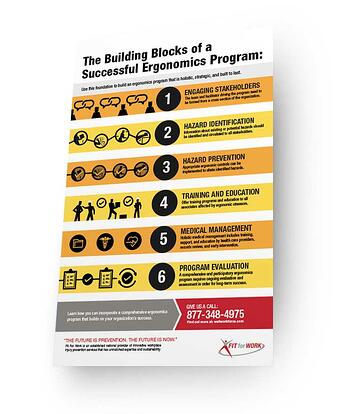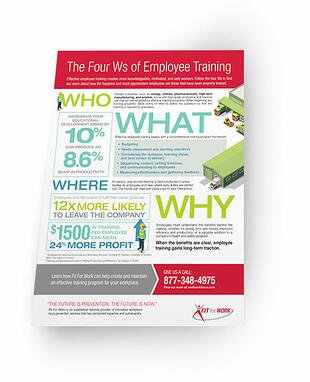By John Ratelle
Senior Vice President of Brokerage Management, Fit For Work
When it comes to effective risk management, there are numerous factors to consider. To simplify this process, we present the 10 Cs of insurance. These components serve as a comprehensive framework for organizations seeking to establish a well-rounded risk management program.
By examining each of these elements closely, you can gain valuable insights into cost assessment, coverage options, cash flow implications, collateral requirements, continuity planning, COPE considerations, risk control strategies, claims management, effective communication, and the importance of commitment.
Let’s take a look.
Insurance
Within the realm of insurance, four key areas demand attention when purchasing coverage for your organization. Understanding and addressing these factors can help you navigate the insurance landscape effectively.
10. Cost
Begin by assessing the cost components within your risk management program. Consider the economic cost of risk (ECOR) and total cost of risk (TCOR). By evaluating these factors, you can gain a clear understanding of the financial impact of risks on your organization.
9. Coverage
The saying “coverage is king” holds as true as ever within the insurance world. Analyze the risks faced by your organization and identify what is not covered by insurance policies. It is crucial to ensure your coverage universe encompasses both known and unknown risks to avoid potential gaps in protection.
8. Cash Flow
Cash flow plays a pivotal role in determining how you will pay for insurance coverage and risk management initiatives. Consider the timing implications and the potential consequences of assuming risks without adequate financial planning.
7. Collateral
Insurance companies often require collateral for statutory, credit risk, and balance sheet reasons. Collateral can take various forms, such as cash, letters of credit (LOC), trusts, surety bonds, or promissory notes. Understanding the collateral requirements will help facilitate a smooth insurance procurement process.
Assets and Operations
Continuity and COPE are key aspects that focus on your organization’s real assets and operations. By emphasizing these factors, you can take necessary steps to ensure business functionality, customer satisfaction, and profitability.
6. Continuity
Losses caused by events such as plant fires, explosions, or water damage can disrupt operations. Understanding the challenges associated with accounting and measuring these losses is crucial. Additionally, having a clear plan of action and knowing who to contact for repairs can minimize disruptions for vendors and customers.
5. COPE
COPE (Construction, Occupancy, Protection, Exposures) provides a foundation for comprehending the risks associated with your physical assets. Evaluate factors such as construction quality, occupancy details, protection systems, and the potential exposures around, inside, outside, and through your premises.
Managing Risk
In this final section, we focus on the most critical aspects of managing risks effectively within your organization.
4. Control
Risk control is an ongoing process that can have the most significant impact on your business. Implement robust risk control measures to mitigate potential threats and protect your organization’s assets, reputation, and bottom line. Prevention and mitigation strategies often result in the lowest long-term TCOR in addition to enhancing productivity and profitability.
3. Claims
Claims are often indicative of failures in various areas, including people, planning, and processes. Analyze claims data to identify recurring issues and improve your risk management strategies. Viewing claims as learning opportunities can help enhance overall organizational performance while developing mitigation strategies.
2. Communication
Effective communication about risks is paramount. Encourage open dialogue and create channels for reporting potential risks, near-misses, and other safety-related concerns. Training programs, incident identification systems, regular reports, storytelling, and active questioning are essential communication tools.
1. Commitment
Commitment to risk management and safety programs should permeate every level of your organization. From the CEO and the board to finance, legal, safety, and HR personnel, everyone must prioritize risk management. Align your company motto with safety principles to foster a culture of commitment throughout the business.
Optimize Your Risk Management Program with Fit For Work
Fit For Work’s risk prevention solutions pair our injury prevention services with the resources of some of the nation’s largest insurance carriers. This allows us to gain accurate insights into which risks are most present within a given workplace and, more importantly, which turnkey solutions we can implement to dramatically mitigate them.
Incorporating insurance into the injury prevention process equips our team and yours with a world of data and information previously disconnected from safety operations. This enables us to more effectively identify opportunities to reduce risk and to measure success in terms of your ROI.
Because we are already interacting with your employees in their working environments, we are able to use this data to help diagnose the most effective approaches to improving safety and reducing workers’ comp claims.





